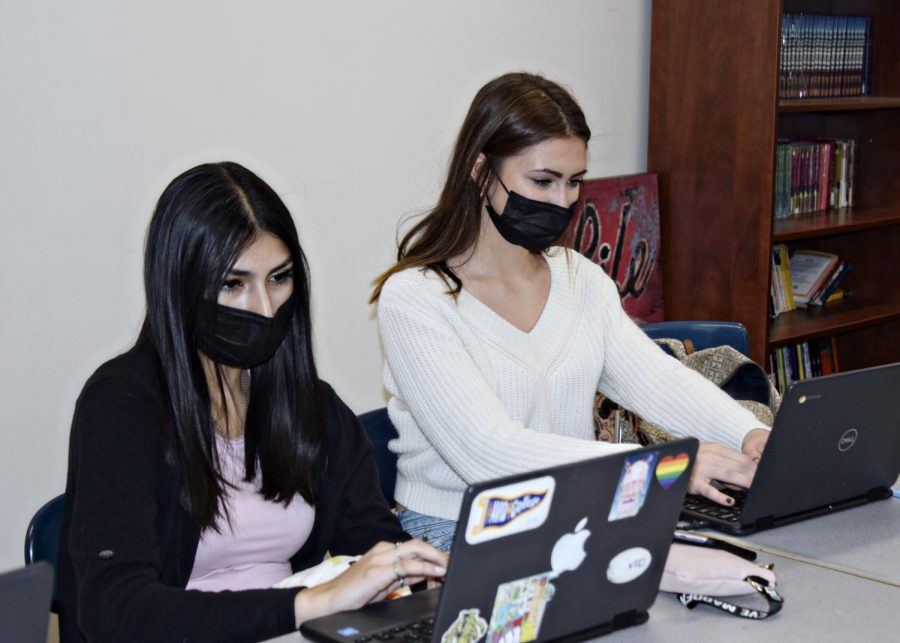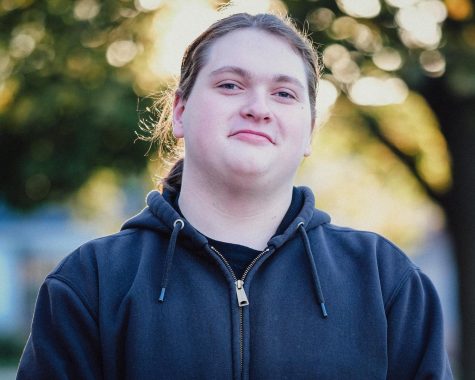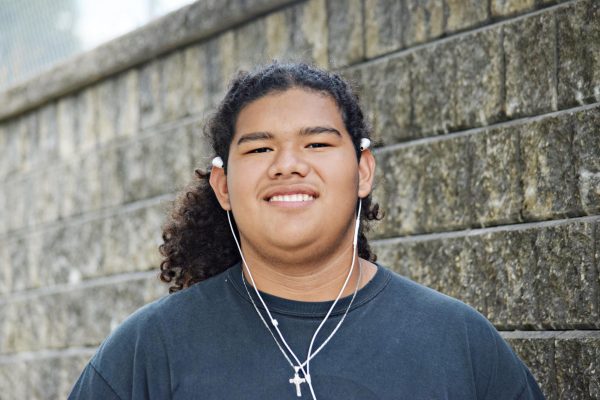Blended learning offers juniors choice next year
Photo by Leslie Fireman
Next year’s seniors will have the option to choose a blended learning course.
November 29, 2021
English teachers Mary Fremeau and Mark Begovich, along with Career and Tech Education teacher Nancy Blume, are looking forward to teaching and integrating students into the all-new blended learning approach next school year at West Chicago Community High School.
Next year, the high school will offer a three classes that will be “blended”, meaning that the class will not follow the traditional, five-day-a-week format. One section each of Critical Reading, Writer’s Workshop, and Consumer Ed have been slated to pilot the program.
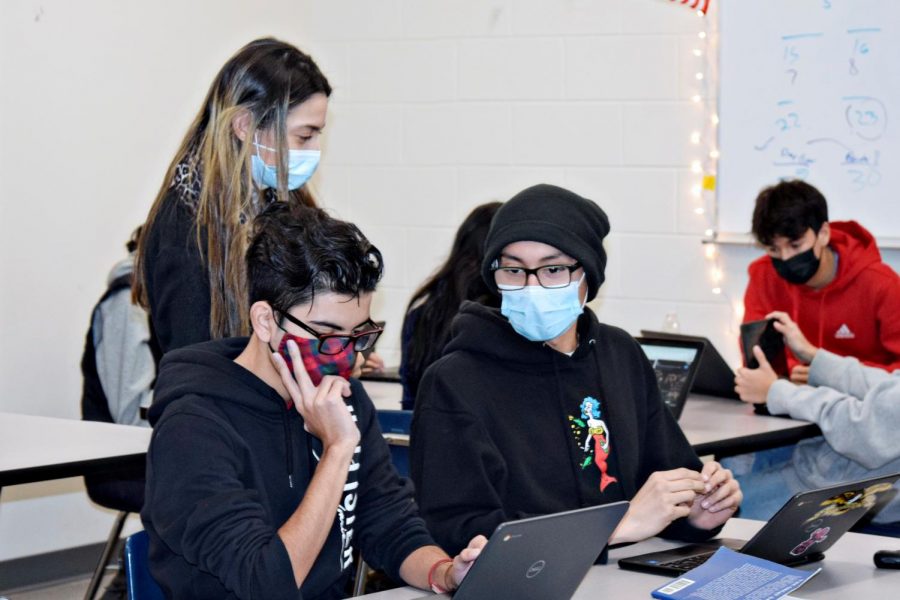
English Division Head Lauren Stewart stated, “Blended classes are widely used at colleges and universities, as well as nearby high schools, giving students the opportunity to learn independently while also having the support of a teacher. Senior courses make the most sense for the initial blended classes WeGo offers because they need to have the opportunity to make choices that allow them to be responsible for their learning.”
The blended learning approach is also ideal for students who play sports, or may have a major workload outside of school. The theory is that they can accomplish more during the day when they are “blended”, or working independently, so that they have more time for after-school activities. Fremeau and Begovich are both slated to teach some classes in this blended curriculum, though as Fremeau explained, they are unsure as to how many sections they will be teaching exactly, as students are currently in the process of registering for classes next year.
Blended Learning came about because the school recognized that over the e-learning period, some students worked better and accomplished more. In fact, some students’ grades improved during remote learning in 2020.
Mary Howard, Assistant Principal for Learning and Curriculum, explained, “COVID emphasized the need for personalization in education and demonstrated that technology creates opportunities to teach and learn without being restricted by a class period or room. Providing students with the option to decide when and where they complete individual work in a blended format also enables students to develop the executive functioning skills they need for high school and beyond.”
“For me, I really enjoyed the experience of working remotely during COVID times. I often miss the independence and power I had over my own learning, so when I was introduced to the idea of blended learning, I thought it was a perfect fit for me,” said junior Nicole Murphy.
Junior Daivik Singh signed up for the blended Consumer Ed class next year because “it was unique to me. I wanted to do it because it would be something new for me.”
Blended learning allows students to attend school normally through the week, but then one or more days a week, based on instructional needs, they might engage in independent work during their scheduled English class.
Those working independently may choose where in the building they would like to work. While blended learning students may not leave the building, as the school is liable for them, they have a range of places from which they can complete assignments. Students who work better when it is quiet, or when alone, might choose to work in the LRC or the tables by the Social Studies rooms. Other students might prefer to work from the Commons or the science Nucleus.
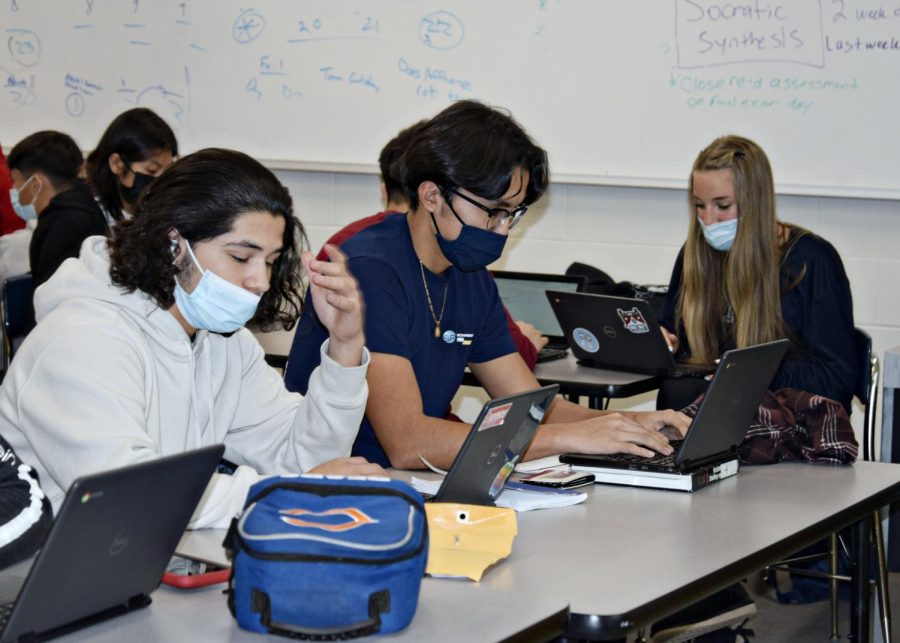
According to Howard, “A Consumer Ed teacher may introduce the ‘Budget Project’ to the whole class and then ‘blend’ one or more days for a particular instructional reason. Whole class days may include an introduction to the project and modeling the procedures, while blended days may include one-on-one meetings with the teacher while others use class time to research places to live and determine rent/mortgage, utilities, and other expenses. At the conclusion of the project, students may share their experience in a whole class setting.”
“Blended learning in Critical Reading may involve whole class discussion and debate about a current event; then, other days may be blended so that the teacher can meet one-on-one for individual conferences about the student’s independent reading book. Similarly, in Writer’s Workshop, whole group instruction may occur one or more days a week on a targeted skill; then, other days may be blended as students work on drafting the essay. Later in the week, a whole class activity may include peer editing or small group work,” continued Howard.
The mix of instructional techniques particularly appealed to junior Anelise Velasco: “I signed up for blended Writer’s Workshop. The idea interested me because personally I work better by myself instead of in a classroom setting, and the blended class sounded like a good mixture of teacher organization and time by myself to work.”
Juniors who are interested in blended learning have the option to sign up for the course through the counseling department. It is important to note that blended learning classes are not mandatory, nor are they ideal for every student: the option is there for those who wish to do it, but standard sections of these courses will be offered as well.
According to Stewart, the class is “a great option for students who know that they are capable of completing work independently outside of class and are looking for freedom, but accept responsibility.”
Begovich added, “It provides more opportunities for students. They can start to take responsibility and work to pace themselves. By the time students are seniors, they really know their strengths and weaknesses as students. Blended learning will lean into some of the strengths for students.”
“I am looking forward to a new way to teach/learn Consumer Education. I think some students will benefit from the flexibility that a blended learning program offers. Together, we will have the opportunity to create something new and meaningful,” said Blume.
The blended learning opportunity may appeal to those who want a change in their daily routine, or work better as individuals in a quiet, independent environment. For Murphy, that opportunity was a large part of the appeal: “It is a format not for everyone, but extremely beneficial for my learning preferences. Taking this into account, a blended class will give me the opportunity to work more independently on my own, as well as a pace specifically designed for me.”
The pilot program will launch in August 2022, at which time Stewart is “most excited to see students learn in new ways and take more control of their own learning. As the blended program grows, students will have more flexibility in their schedules and will develop skills like organization and prioritization, as well as self-efficacy.”
Those teaching the classes are excited for the blended learning experience as well.
“To be honest, I am looking forward to being able to work more one-on-one with students. Sitting and looking specifically at work together will be great,” said Begovich.
For juniors who select the blended learning style, the hope is that they will blend to next year’s curriculum with ease.



